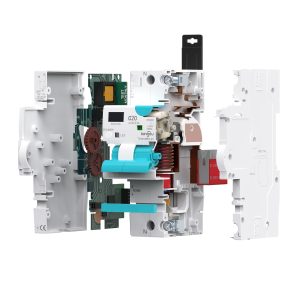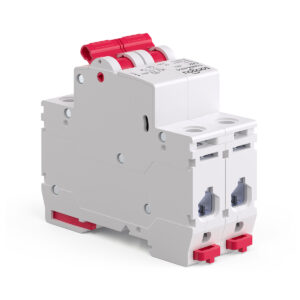
EXHIBITION 2025| TONGOU In China 138th Canton Fair
Booth: Hall 15.2 Booth25-26 Date: October 15-19, 2025
In every home, office, and industrial facility, invisible guardians quietly keep our environments comfortable, safe, and efficient. They don’t make noise, yet they constantly sense, measure, and respond to the world around us.
These silent workers are temperature and humidity sensors — essential tools for everything from smart homes to greenhouses, laboratories, and factories.
This guide breaks down what these sensors are, how they work, where they’re used, and how to choose the right one for your needs.
At their core, a temperature and humidity sensor is a compound device that measures both ambient temperature and moisture in the air.
Though often housed together, the device includes two distinct components — a temp sensor and a humidity sensor.

A temp sensor detects the degree of heat or cold in its surroundings and converts it into an electrical signal that other systems can read and process. It helps maintain comfort, safety, and energy efficiency in various environments.

A humidity sensor measures the amount of water vapor in the air. The most common value it provides is relative humidity (RH) — the percentage of moisture in the air compared to the maximum amount that can be held at a given temperature.
Together, they give a complete picture of environmental conditions, making them indispensable in both industrial and everyday applications.
The science behind these sensors lies in materials whose electrical properties change with environmental conditions.
Most temperature sensors operate based on either voltage or resistance changes:
Thermocouples generate a small voltage that varies with temperature.
Thermistors and RTDs (Resistance Temperature Detectors) change their electrical resistance predictably as temperature rises or falls.
A microcontroller then converts this data into an accurate temperature reading.
Humidity sensors rely on how moisture affects a sensing material:
Capacitive humidity sensors use a hygroscopic polymer layer between two electrodes. As humidity increases, the material absorbs water, changing its capacitance — a value directly related to relative humidity.
Resistive humidity sensors use materials whose electrical resistance decreases as they absorb more moisture, providing a simple but effective reading.
Thermistors – Highly sensitive, affordable, and fast-responding. Common in HVAC systems and home appliances.
RTDs (Resistance Temperature Detectors) – Extremely accurate and stable; ideal for laboratories and industrial environments.
Thermocouples – Durable and capable of measuring a wide range of temperatures, perfect for industrial and high-heat scenarios.
Digital Temp Sensors – Compact IC-based sensors found in IoT devices, microcontrollers, and smart systems.
Capacitive Sensors – The most popular, offering accuracy, long life, and stability. Common in HVAC, weather monitoring, and smart homes.
Resistive Sensors – Simple and low-cost, used in consumer products and small devices.
Thermal Conductivity Sensors – Measure absolute humidity, often used in specialized industrial setups.

These sensors have countless applications across homes, industries, and smart systems.
Smart Homes & HVAC Systems – They enable thermostats and automation systems to adjust heating, cooling, and humidity for comfort and energy efficiency.
Agriculture & Greenhouses – Monitor and control growing conditions, ensuring crops thrive.
Data Centers – Protect servers by preventing overheating and moisture buildup.
Healthcare & Pharmaceuticals – Maintain precise storage conditions for vaccines and medical supplies.
Manufacturing & Processing – Control temperature and humidity in food, printing, textile, and electronics production.
Even the most advanced sensor can produce poor data if placed incorrectly. Follow these guidelines for accurate results:
Choose a central, well-ventilated spot – Avoid corners or enclosed spaces.
Keep away from heat sources – Sunlight, lamps, or electronics can distort readings.
Avoid drafts and vents – Airflow can cause fluctuations.
Mount on an interior wall – Provides a stable reflection of the true room condition.
When selecting a temp and humidity sensor or sensor probe, consider the following factors:
Measurement Range – Can it handle the expected temperature and humidity extremes?
Accuracy Requirements – A home monitor may need ±2 °C, while a lab may need ±0.1 °C.
Response Time – For fast-changing environments, prioritize sensors with quick response.
Environmental Conditions – Will it face dust, chemicals, or condensation? Choose durable, sealed probes if so.
Output Type – Analog, digital (I²C, Modbus, RS-485), or wireless—ensure compatibility with your system.
Maintenance and Calibration – Look for long-term stability and easy recalibration options.



Whether you’re building a smart home, maintaining a server room, or monitoring crop environments, temperature and humidity sensors play a vital yet often invisible role. Understanding how they work — and choosing the right one — empowers you to create safer, more efficient, and more comfortable spaces.

Johnson Lim is the General Manager of Changyou Technology and has over 10 years of experience in circuit protection technology and residential electrical safety. He is committed to developing and producing safer and smarter electrical products.

Booth: Hall 15.2 Booth25-26 Date: October 15-19, 2025

RCBO Trips at Night? Causes, Diagnosis, and Lasting Fixes Already know what an RCBO is? Great. This page skips the basics and focuses on nocturnal

MCB B/C/D Curves in Practice: How Inrush Current Shapes Your Choice This guide assumes you already know what an MCB is. If you need a

SPD Coordination for Solar PV and EV Charging: Where to Place Type 1/2/3 Already know the difference between Type 1/2/3 and AC vs DC SPDs?

tongou was established in 1993 and is the trademark of Changyou Technology. We position ourselves as providers of intelligent product solutions for high and low voltage electrical systems, taking on solving customers’ pressures and challenges as our responsibility and creating value for them. We utilize intelligent products to serve global customers, making life smarter and more convenient to benefit your life.
Paidong Industrial Zone Qiligang,Yueqing City,Zhejiang province,China.
Sales: [email protected]
After-sales: [email protected]
© 2025 Changyou Technology. All Rights Reserved.

